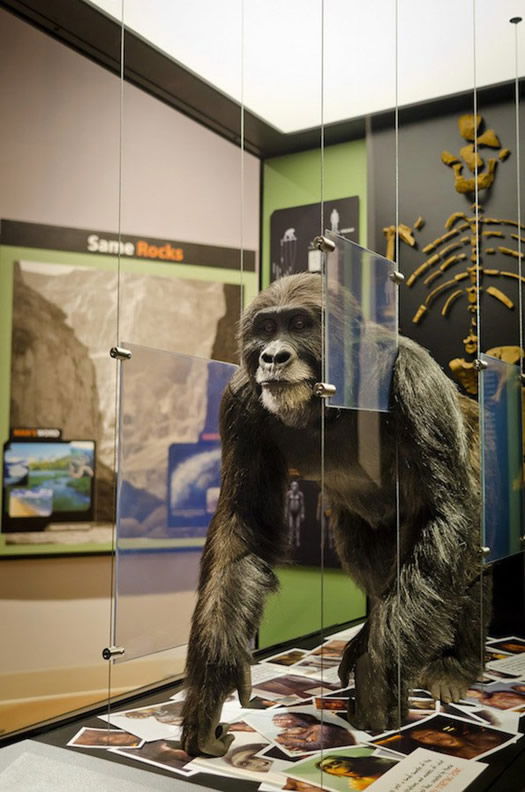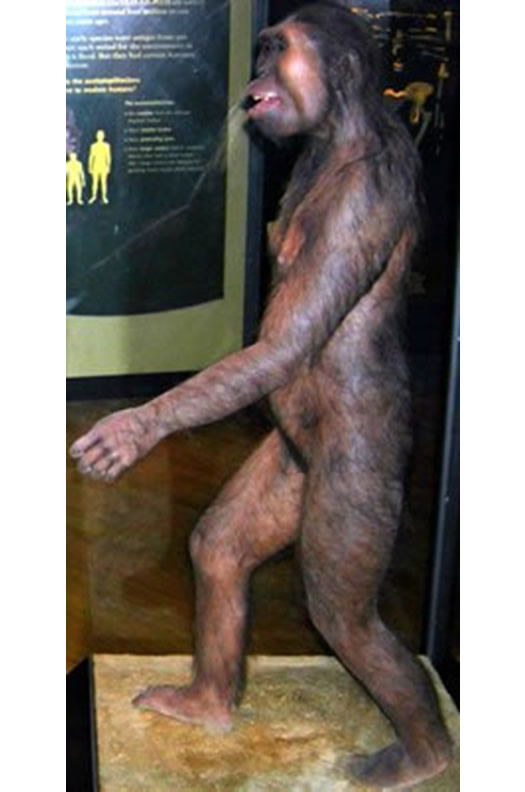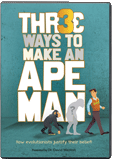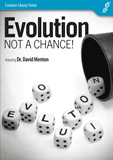
Did Lucy Fall to Her Death Because She Climbed Our Family Tree?
News to Know
Abstract
Fractures in humanity’s most famous evolutionary “ancestor” supposedly show that she fell to her death because she was too bipedal for her own good.
News Sources
- USA Today: “Cracking an Ice Cold Case: Nearly 3.2 Million Years Ago, Lucy Dies. Now We Know How.”
- National Geographic: “Did a Fall from a Tree Kill Lucy, Our Famous Ancestor?”
- Science: “Did Famed Human Ancestor ‘Lucy’ Fall to Her Death?”
- The Chicago Tribune: “Did Lucy Fall? Or Was She Pushed?”
- John Hawks: “Why I’m Skeptical About Lucy in the Skyfall”
Everyone loves a mystery, and scientists are no exception. Take the famous Piltdown man—an amalgamation of medieval human and orangutan parts fraudulently cobbled-together and offered to the world as a real transitional ape-man. Was that human ancestral hoax the result of a conspiracy or the work of one man? A recent study has declared that the perpetrator was a single individual. (You can read more about that in “The Mystery of ‘Britain’s Greatest Hoax’ Solved?”)
Now the authors of a study in Nature claim to have solved human history’s oldest cold case: how and why our iconic, supposed ancestor Lucy died. And just as the scientific community originally fell for the fraudulent Piltdown man because it showed evolutionists the ape-man they assumed existed, so the authors of Lucy’s forensic analysis have colored their ultimate conclusions to fit their own evolutionary assumptions. They have started with interesting observations—possibly discovering Lucy’s cause of death—but then interpreted them within the context of an evolutionary story tailored to the personified Lucy of their dreams.
Who Was Lucy?
Lucy is an extinct ape. The fossil was named because the Beatles song “Lucy in the Sky with Diamonds” was playing in Donald Johanson’s camp when he discovered her partial skeleton in Ethiopia’s Hadar Formation. She is Australopithecus afarensis, long hailed as the evolutionary, bipedal mother of humanity. Perhaps more than any other fossil since her 1974 discovery, Lucy is presented as “exhibit A” by evolutionists in their attempt to show that humans evolved from an ape-like ancestor. A big part of Lucy’s legacy has revolved around the claim that Australopithecus afarensis evolved from arboreal ancestors to walk upright on two legs.

Image from the Creation Museum.

Image by Mark Looy.1
Which of these models represent the real Lucy? The model on the left, found in the Creation Museum’s “Starting Points” room, is based on anatomical analysis of Australopithecus afarensis fossils. The model on the right, found at the Field Museum in Chicago, is greatly influenced by the evolutionary bias that sees Lucy as a human ancestor that evolved human-like bipedality.
Did Lucy Walk Like Us?
Studies of Lucy’s bones and those of other Australopithecus afarensis specimens reveal shoulders, wrists, and hands well suited for knuckle walking and hanging out in trees. Studies of the pelvis, spine, and legs of these specimens have produced reconstructions varying from those much like a chimpanzee’s to those that differ from modern apes but fail to match the arrangement needed for an efficient bipedal gait. At best, stretching these reconstructions to their limits, the afarensis ape might have been equipped to move its legs in some unique ways, but it was too unstable for sustained bipedal locomotion.2 (You can read much more about this in “A Look at Lucy’s Legacy” and “Lucy, the Knuckle-Walking ‘Abomination’?”)
Lucy did not walk like us. Nevertheless, with her small ape skull, Lucy is still touted as the poster child for bipedality over braininess—proof that our ancestors learned to walk upright on two legs before they learned to think on their feet.
How Did Lucy Die?
University of Texas at Austin anthropologist John Kappelman and colleagues examined Lucy’s remains as well as CT scans of her bones in an effort to determine how she died. The pattern of fractures in Lucy’s bones has led Kappelman’s team to hypothesize that she fell from a tall tree—perhaps four to five stories high. They report the breaks in the upper and lower extremities, shoulders, pelvis, back, and head are consistent with those seen in humans who fall from great heights onto very hard surfaces. The authors write that she likely landed feet first, twisted forward to the right, and spread out her arms, sustaining numerous fractures as bones were rapidly driven into other bones by sudden vertical deceleration. Such trauma would have been accompanied by sufficient organ damage to cause imminent death, though of course no internal organs are preserved for examination.
Support for their claim that Lucy died in a fall is the pattern of arm and shoulder breakages. Her upper extremities, especially on the right, are broken in the same way as the arms and shoulders of accident victims who reach out in an attempt the break their fall. Needless to say, fossils do not try to catch themselves when they fall, so the authors maintain the living Lucy did.
Additional evidence demonstrating that these fractures were associated with Lucy’s traumatic death, the authors point out, is the fact that tiny pieces of splintered bone remained with the broken bones, trapped as they would have been by the living connective tissue covering the bones. These bits would have been strewn about and lost, they explain, if the bones had broken sometime after decomposition began. They propose that this also demonstrates the body was rapidly buried soon after death. Furthermore, Kappelman notes that the fractures he believes were sustained in the fall are hinge-like, greenstick fractures like those that typically happen in living bone rather than the sort of fractures produced by trauma to bones long dead.
Did Lucy in the Sky Fall?
Kappelman solicited the opinions of orthopedic surgeons and consulted orthopedic literature to define the traumatic cause of Lucy’s fracture pattern. Some anthropologists are impressed with his study. For instance, Stony Brook’s William Jungers says, “The detailed, comprehensive analysis of her fracture pattern compared to the extensive human clinical literature on skeletal trauma . . . is especially compelling.”3 However, many experts note that Kappelman’s team did not explore nontraumatic causes for the breakages, particularly the likelihood that the bones broke after death.
Paleoanthropologist John Hawks of University of Wisconsin-Madison comments that Kappelman’s team should have compared Lucy’s fractures to those in fossils that could not have fallen from great heights. By default, such fossil would have mostly been broken during the processes of burial and fossilization. Hawks says, “If they examined a large collection of faunal fossils from the same context, they would find similar patterns, not from falling out of a tree but from simple post-depositional breakage.”4
And while the study’s authors note that some breakages in Lucy’s bones did not fit traumatic patterns and therefore likely occurred after death, a great number of fractures were put down to Lucy’s great fall. John Hawks comments that if all the fractures the study’s authors attributed to Lucy’s fall were truly her cause of death, “she didn’t fall out of a tree, she fell out of an airplane.”5
I think the methodology falls short of providing a realistic explanation for the majority of breaks in Lucy's bones.
“I think the methodology falls short of providing a realistic explanation for the majority of breaks in Lucy's bones,” says Arizona State University paleoanthropologist William Kimbel. “We see this kind of damage frequently in a wide variety of animals that did not fall from trees,” he explains, adding, “The authors did not go through the detailed, formal evaluation of alternative explanations of the breaks.”6
“These authors make no effort to test the alternative hypothesis that these cracks and other breaks were made during the processes of fossilization and erosion,” says University of California, Berkeley, paleoanthropologist Timothy White. “In fact,” he says, “the authors appear to have focused only on the cracks that they could attribute to an imagined fall, ignoring the additional abundant cracks on Lucy and other fossils.”7
“Elephant bones and hippo ribs appear to have the same kind of breakage,” says Donald Johanson, the Arizona State University paleoanthropologist who discovered Lucy. “It’s unlikely they fell out of a tree.”8 Johanson believes the fractures are “undoubtedly the result of geological forces acting on the bones after they are buried during the process of fossilization.”9
Lucy’s Fall from Arboreal Space
While the cause of Lucy’s death may remain a topic of debate and a subject for more exhaustive study in the future, the significance being attributed to her putative fall is very instructive. In fact, paleoanthropologist John Hawks suggests the authors took a detour from science into storytelling, acknowledging that while at least some of the fractures may have resulted from a fall, “the authors frame their hypothesis as a just-so story, and only examine evidence consistent with it instead of looking for contrary evidence.”10
Let’s have a look at these stories. Could the authors’ presuppositions have influenced the way they viewed the evidence? Well for starters, if Lucy did die from a fall, then perhaps she did spend time high up in trees, maybe nesting or foraging as modern chimpanzees do. Despite anatomical features that show Lucy and her kin were equipped to climb, whether trees were a significant part of their habitat remains a topic of vigorous debate among evolutionists. Kappelman and colleagues believe they have put that one to rest, writing, “It is therefore ironic that her death can be attributed to injuries resulting from a fall, probably out of a tall tree, thus offering unusual evidence for the presence of arborealism in this species.”11 Of course, the word probably is significant: there are other tall things from which an ape can fall. For all we know, Lucy might have fallen off a cliff!12
In any case, providing evidence that Lucy likely liked life in the tall wood too much for her own good isn’t quite enough to make the evolutionary point the authors have in mind. Remember, Lucy is popularly known as the first of humanity’s ancestors to climb down from the arboreal realm and evolve the ability to stroll around Africa upright on two legs. Regardless of reality, that is her legacy. Thus, although the authors do note that chimps sometimes sustain traumatic injury and death from falls, they find in Lucy’s misadventures a more sinister saga in which the villain is the very evolutionary change that supposedly put us on our feet. They write:
We suggest that the adaptations that facilitated bipedal terrestrial locomotion compromised the ability of individuals to climb safely and efficiently in the trees; this combination of features may have predisposed these taxa [supposedly bipedal extinct apes like Lucy] to more frequent falls from height.13
Simply put, Kappelman explains, “It may well have been the case that adaptations that permitted her to live more efficiently on the ground compromised her ability to move safely in the trees—and may have predisposed her kind to more falls.”14
For Kappelman, the story takes a tender, almost tear-jerking twist. “We can empathize with her in death, and what we think was her last desperate act, reaching out her hands to break her fall,”15 he says. “By understanding her death is how she came alive to me. Lucy was no longer simply a box of bones but in death became a real individual: a small, broken body lying helpless at the bottom of a tree.”16
It is this personification of Lucy that apparently impressed Hawks (above) to accuse this study’s authors of spinning a sad story instead of sticking to the rigorous comparisons of observational science. However, we must point out that it is the unobservable and unverifiable evolutionary presumption that Lucy’s species was no longer anatomically suited for life in the trees—the insupportable determination to put her two feet firmly on the ground—that led the authors to ultimately imply that Lucy and possibly a host of other undiscovered bipedal apes like her were falling out of trees with epidemic frequency.
Why Evolutionists Need a Bipedal Lucy
Evolutionary presumptions inevitably color the popular interpretations of such fossils.
Without any authentic big-brained ape-men, in the wake of the Piltdown fraud, the search for bipedal ape-men (and ape-ladies like Lucy) is the grail for evolutionists trying to show how humanity evolved. After all, walking around comfortably and efficiently on two legs physically sets us apart from living primate animals. Whether or not Lucy fell out of a tree, she and those extinct apes like her need to climb down and provide the illustrations for the evolutionary just-so story of how we humans came to be. Evolutionary presumptions inevitably color the popular interpretations of such fossils.
When stripped of evolutionary presumptions, however, we find that science does not reveal that animals evolve into different, more complex kinds of animals. Nothing in experimental science demonstrates that humans did or could evolve from ape-like ancestors. God created both land animals and the first two humans on the same day, about 6,000 years ago. Nothing in observable science contradicts that truth, which we learn from Genesis, a record of God’s own eyewitness account of our origins.
Two Fatal Falls
An ape we now call Lucy may have fallen to her death a few thousand years ago—though not 3.18 million years ago as evolutionists currently claim. Her fatal fall is as tragic as the violent death of any animal that has died since Adam’s fall into sin about 6,000 years ago brought death into the world. However, Lucy’s demise does not represent either the death of our long lost relative or the cost of bipedal evolution.
Further Reading
- A Look at Lucy’s Legacy
- Lucy, the Knuckle-Walking “Abomination”?
- Lucy Makeover Shouts a Dangerously Deceptive Message About Our Supposed Ancestors
For More Information: Get Answers
Remember, if you see a news story that might merit some attention, let us know about it! (Note: if the story originates from the Associated Press, FOX News, MSNBC, the New York Times, or another major national media outlet, we will most likely have already heard about it.) And thanks to all of our readers who have submitted great news tips to us. If you didn’t catch all the latest News to Know, why not take a look to see what you’ve missed?
(Please note that links will take you directly to the source. Answers in Genesis is not responsible for content on the websites to which we refer. For more information, please see our Privacy Policy.)
Footnotes
- Furthermore, the fossilized Laetoli footprints supposedly show that Lucy’s relatives pranced about on two arched feet. These prints however appear to be just as human as those on today’s beach sand. These footprints were found 1,000 miles away from the site of Lucy’s discovery, but they are routinely counted as Australopithecus afarensis, not Homo sapiens, because they are supposedly too old to belong to humans. This claim, like the common depictions of Lucy as a svelte biped with sweetly emotional eyes sparkling like diamonds, rests on unverifiable evolutionary assumptions.
- Ann Gibbons, “Did Famed Human Ancestor ‘Lucy’ Fall to Her Death?,” Science, August 29, 2016, http://www.sciencemag.org/news/2016/08/did-famed-human-ancestor-lucy-fall-her-death.
- John Hawks, “Why I’m Skeptical about Lucy in the Skyfall,” John Hawks Weblog, August 29, 2016, http://johnhawks.net/weblog/fossils/afarensis/lucy-falling-tree-kappelman-2016.html.
- Ibid.
- Doyle Rice, “Cracking an Ice Cold Case: Nearly 3.2 Million Years Ago, Lucy Died. Now We Know How,” USA Today, August 29, 2016, http://www.usatoday.com/story/tech/sciencefair/2016/08/29/lucy-fossil-death-tree-ethiopia/89509676/.
- Adam Hoffman, “Did a Fall from a Tree Kill Lucy, Our Famous Ancestor?,” National Geographic, August 29, 2016, http://news.nationalgeographic.com/2016/08/lucy-tree-fall-human-ancestor/.
- Editorial Board, “Did Lucy Fall? Or Was She Pushed?,” Chicago Tribune, August 31, 2016, http://www.chicagotribune.com/news/opinion/editorials/ct-lucy-nature-fall-from-tree-edit-jm-20160831-story.html.
- Hoffman, “Did a Fall from a Tree Kill Lucy, Our Famous Ancestor?”
- Hawks, “Why I’m Skeptical about Lucy in the Skyfall.”
- John Kappelman et al., “Perimortem Fractures in Lucy Suggest Mortality from Fall out of Tall Tree,” Nature 537 (2016): 1, doi:10.1038/nature19332.
- Lucy was found in a sandstone deposit that appeared to have been laid down as a crevasse-splay channel. These deposits can form when a river changes course. While they are not multiple stories high, the authors determined the probable height from which Lucy fell based on the usual nesting and foraging height of modern-day chimpanzees. At least in this they used assumptions reflecting a belief in her ape-likeness! We do not suggest that Lucy actually fell off a cliff but only wish to point out that we cannot, based on evidence, know for certain from what she fell—much less how arboreal she was and why she fell—if she actually fell to her death in the first place. Assumptions about Lucy’s nature affect how the authors interpret their observations. See Ibid, 3.
- Ibid, page 4.
- Gibbons, “Did Famed Human Ancestor ‘Lucy’ Fall to Her Death?”
- Editorial Board, “Did Lucy Fall? Or Was She Pushed?”
- Rice, “Cracking an Ice Cold Case.”
Recommended Resources

Answers in Genesis is an apologetics ministry, dedicated to helping Christians defend their faith and proclaim the good news of Jesus Christ.
- Customer Service 800.778.3390
- © 2024 Answers in Genesis




